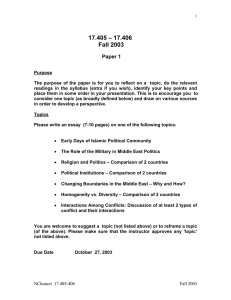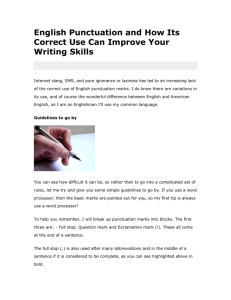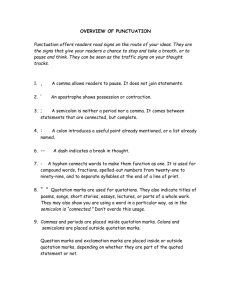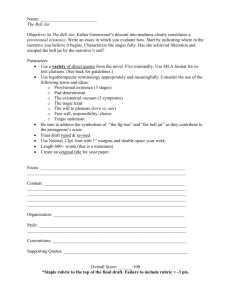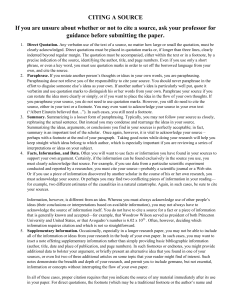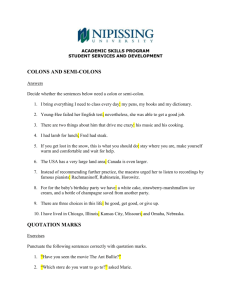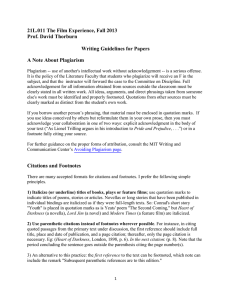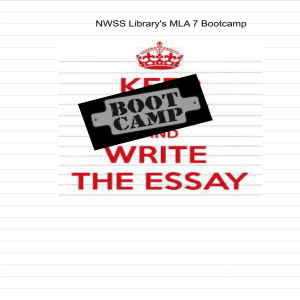A brief guide to correction marks: circle = a problem with spelling
advertisement
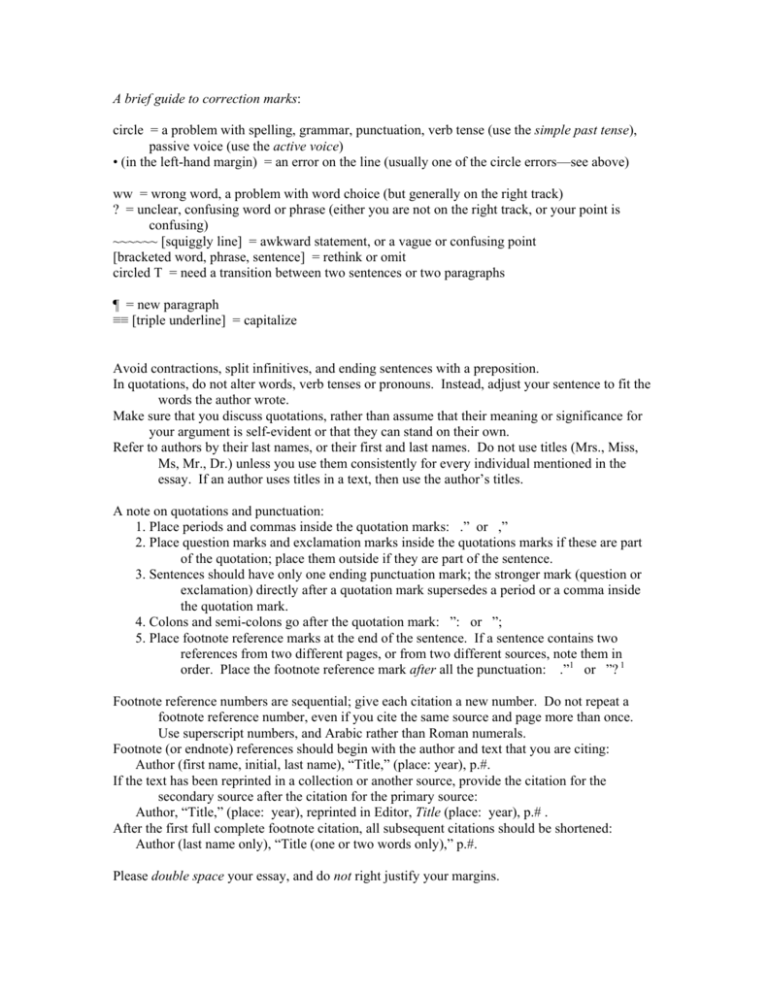
A brief guide to correction marks: circle = a problem with spelling, grammar, punctuation, verb tense (use the simple past tense), passive voice (use the active voice) • (in the left-hand margin) = an error on the line (usually one of the circle errors—see above) ww = wrong word, a problem with word choice (but generally on the right track) ? = unclear, confusing word or phrase (either you are not on the right track, or your point is confusing) ~~~~~~ [squiggly line] = awkward statement, or a vague or confusing point [bracketed word, phrase, sentence] = rethink or omit circled T = need a transition between two sentences or two paragraphs ¶ = new paragraph ≡≡ [triple underline] = capitalize Avoid contractions, split infinitives, and ending sentences with a preposition. In quotations, do not alter words, verb tenses or pronouns. Instead, adjust your sentence to fit the words the author wrote. Make sure that you discuss quotations, rather than assume that their meaning or significance for your argument is self-evident or that they can stand on their own. Refer to authors by their last names, or their first and last names. Do not use titles (Mrs., Miss, Ms, Mr., Dr.) unless you use them consistently for every individual mentioned in the essay. If an author uses titles in a text, then use the author’s titles. A note on quotations and punctuation: 1. Place periods and commas inside the quotation marks: .” or ,” 2. Place question marks and exclamation marks inside the quotations marks if these are part of the quotation; place them outside if they are part of the sentence. 3. Sentences should have only one ending punctuation mark; the stronger mark (question or exclamation) directly after a quotation mark supersedes a period or a comma inside the quotation mark. 4. Colons and semi-colons go after the quotation mark: ”: or ”; 5. Place footnote reference marks at the end of the sentence. If a sentence contains two references from two different pages, or from two different sources, note them in order. Place the footnote reference mark after all the punctuation: .”1 or ”? 1 Footnote reference numbers are sequential; give each citation a new number. Do not repeat a footnote reference number, even if you cite the same source and page more than once. Use superscript numbers, and Arabic rather than Roman numerals. Footnote (or endnote) references should begin with the author and text that you are citing: Author (first name, initial, last name), “Title,” (place: year), p.#. If the text has been reprinted in a collection or another source, provide the citation for the secondary source after the citation for the primary source: Author, “Title,” (place: year), reprinted in Editor, Title (place: year), p.# . After the first full complete footnote citation, all subsequent citations should be shortened: Author (last name only), “Title (one or two words only),” p.#. Please double space your essay, and do not right justify your margins.
